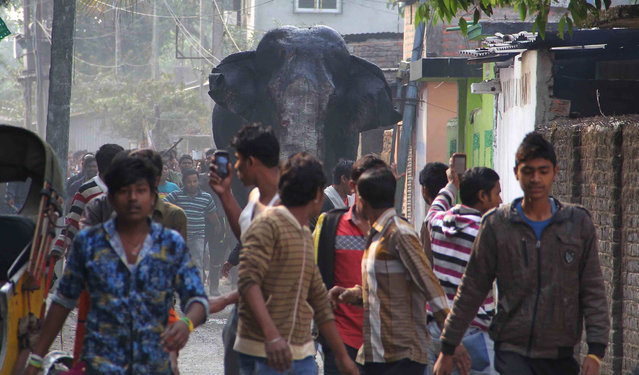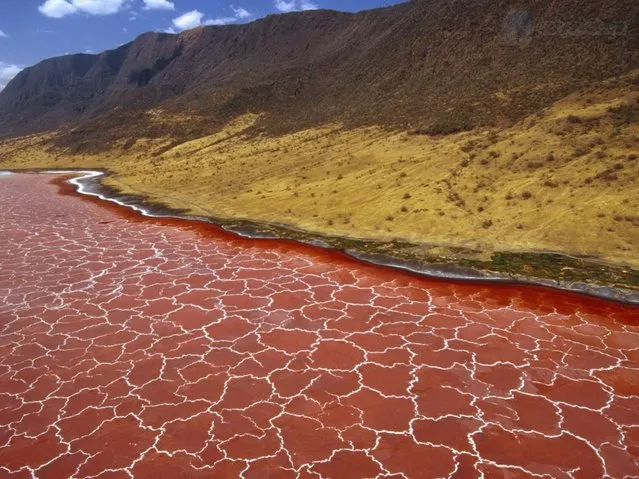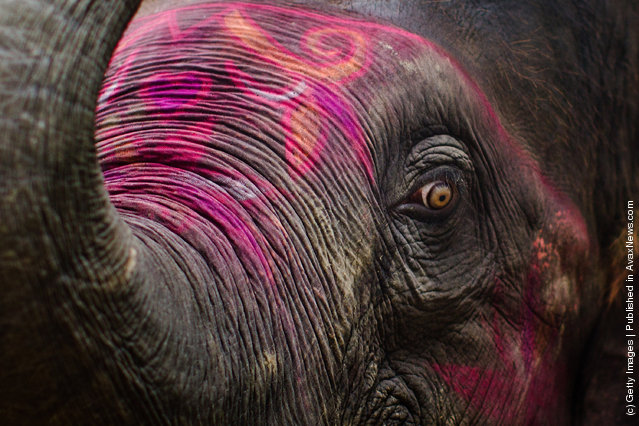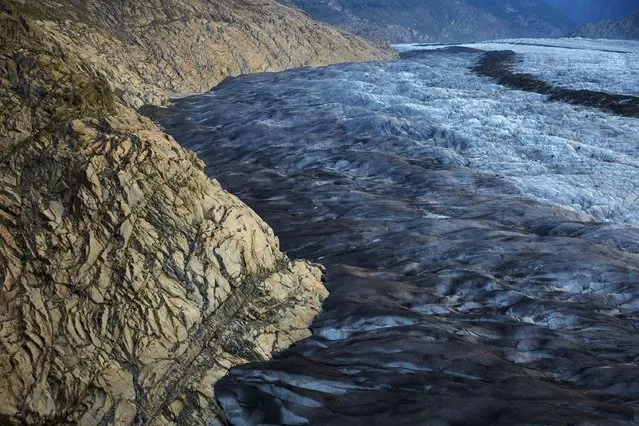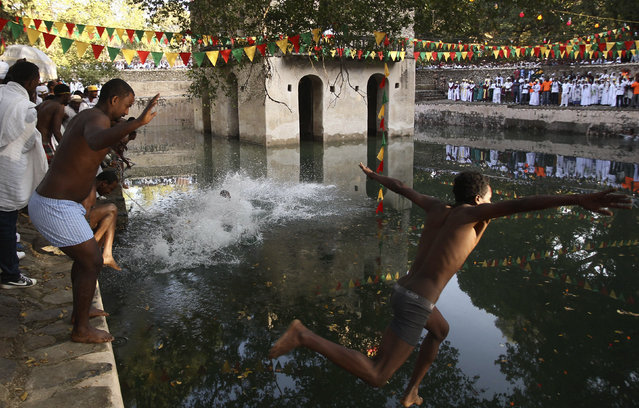
Faithful jump into the waters of Fasilides Bath as part of a ceremony in which the waters are blessed by the priest of Ethiopian Orthodox Tewahedo church during the second day of Timket in Gondar, Ethiopia, January 20, 2016. “Timket”, the greatest Ethiopian festival of the year is to commemorate Jesus Christ's baptism in the Jordan River by John the Baptist. (Photo by Tiksa Negeri/Reuters)
21 Jan 2016 12:46:00,post received
0 comments

